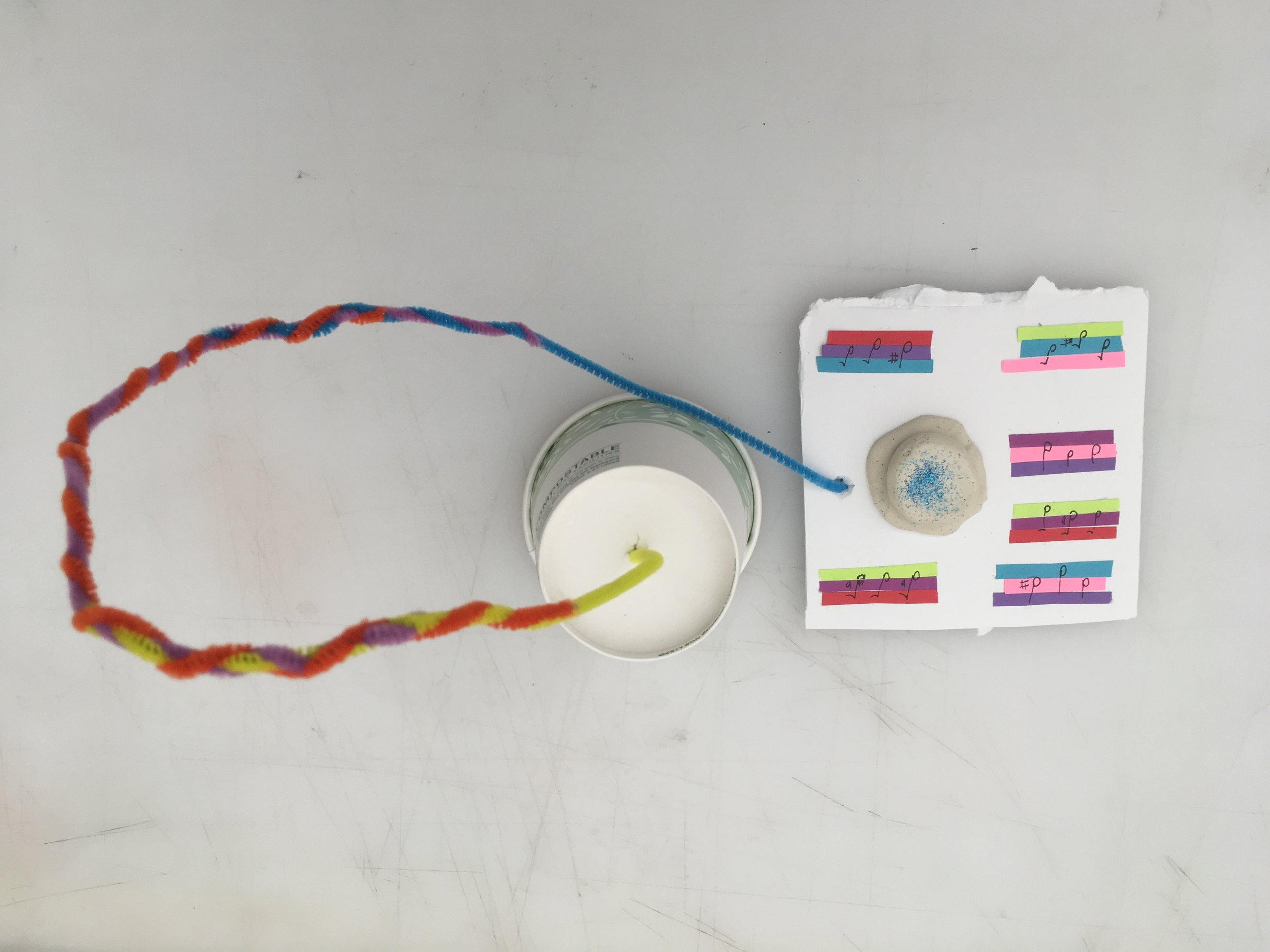Above is my rough, two-minute sketch of Kara Walker’s “Event Horizon,” a mural on view at Arnhold Hall. I start by showing it not because it’s a good rendering of the piece—it’s very clearly not—but because it is a mural in two parts, and depending on which wall you look at first, you might come away with a distinct impression. I certainly did.
Located on the walls of a stairwell, the size and shape of the mural forces you to constantly look up or down: you can never really see the thing in full. And you can’t really tell which direction the mural is supposed to be viewed, either: on which wall does the story start?
My ten observations in the moment:
The “tunnel” looks like the inside of a human intestine.
Upon close examination, the mural is not paint as it appears; it’s actually stuck on like wallpaper.
Although the entire mural is rather bleak, two of the children playing pattycake look to be less in despair. (Why?)
While the figures are flat by nature, therefore seeming devoid of detail, there is very clear movement of each of them. Depending on which way you’re looking, you can almost tell which direction they are moving based on the wind blowing through their clothes or the way gravity makes them fall.
There is a man with the hat close to the top of one of the walls, who appears to either be pushing down a woman with a child, or trying to catch them. Is he a slaveowner or a slave?
Many of the women’s hair is very intricate with braids and bows.
There are objects that upon first glance look like they may be rocks, but are actually dismembered hands and feet.
There is only one woman with her hands bound: the one trying to catch the baby. The rest’s hands are free.
The little girl at the top of the pit seems comfortable—she’s whistling and throwing something into the pit.
Although at first I thought the direction was linear—that everyone was falling into the pit—it actually looks like some people are trying to crawl out, while others are falling.
Some observations from fellow classmates:
The hair and features on some of the figures look stereotypically African.
The figures’ hands are very expressive: you can tell which ones are pushing and which are pulling.
The location of the mural is significant: with a staircase you can walk up or down, but the figures can only go down.
There’s nowhere for a moment of respite. Even the two children playing have such a small space to sit, and it seems like they may not be able to get out.
The figures are almost life-sized.
I left the mural with rather a bleak outlook. It seemed like these slaves had no opportunity for escape, like they were constantly in a state of free fall or entrapment. But upon research, I learned that the artist associated the passageway with the Underground Railroad, and that some of the figures could potentially reach opportunity.
When I looked at the piece in person, I was fixated on the little girl at the top. Why did she seem so peaceful? What was she throwing down into the pit? I even drew her side of the wall first, because I was so convinced she was somehow complicit in the horrible work of slavery. But with the knowledge that the work depicts the Underground Railroad, I’m able to view it with a little more optimism: maybe the little girl reached the other side, and is more at peace.
This would also explain the two children playing in the hole. Perhaps they are hiding, waiting out the horrors outside, and not actively falling or being pursued. This of course does not excuse the atrocities befalling the other figures: the woman losing her baby, the slave driver whipping someone into the hole, the screaming figures plummeting into the abyss.
I’m lucky to have seen some of Kara Walker’s other work at the National Portrait Gallery in Washington, D.C. That work was in the same style: silhouettes of primarily black people, sometimes fashioned stereotypically, facing horrible brutality through slavery. The style, which she developed in graduate school, allows the figures to appear cartoonish but also endless. There’s a wry bleakness to them that makes it hard to look away; it’s enthralling but also somewhat sickening. In short, it’s the perfect medium to depict the atrocities of human subjugation.









